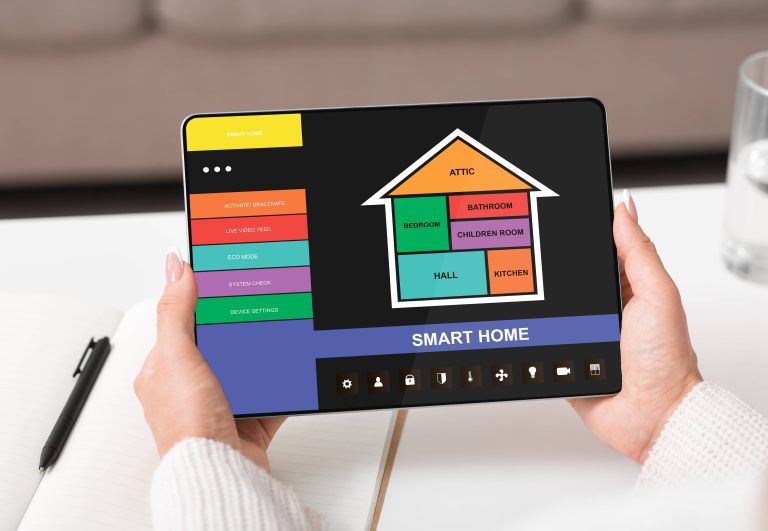
In the rapidly evolving world of smart home technology, we are continually witnessing the convergence of convenience and innovation. One of the key enablers of this transformation is geofencing. Although it might sound complex or technical, geofencing is a straightforward concept that can have a profound impact on how your smart home operates. So, what exactly is geofencing, and how can it enhance your smart home? Let’s dive into it!
What is Geofencing?
Simply put, geofencing is a location-based technology that uses GPS, RFID, Wi-Fi, or cellular data to create a virtual boundary around a specific area. When a device, typically a smartphone, enters or exits this boundary, it triggers a pre-set action. This can range from simple notifications to sophisticated integrations with other smart home devices.
In the context of home automation, geofencing enables your smart home to react dynamically based on your location. Imagine your home welcoming you as you return, or ensuring it’s secure when you leave, all without lifting a finger. By configuring geofences, you can automate routines and controls in a way that responds intelligently to your presence or absence.
How Does Geofencing Work?
Geofencing utilizes the location data from your smartphone or other device to establish whether you are within the predefined virtual boundary. Setting up geofencing involves:
1. Defining the Perimeter: This could be as small as your home or yard, or as large as a neighborhood. Using your smart home application, you set coordinates for the boundary.
2. Linking with Devices: Your smartphone acts as the trigger for the geofence, communicating with your smart home system through mobile apps like Apple HomeKit, Google Home, or a proprietary system from smart device manufacturers.
3. Automating Actions: Once the geofence is set, you configure what should happen when you enter or exit the zone. This could include unlocking doors, adjusting thermostats, turning lights on or off, or even notifying you via text or app.
Benefits of Geofencing for Smart Homes
Geofencing is not just about cool gadgetry; it offers several tangible benefits that can significantly enhance your smart home experience.
1. Energy Efficiency
One of the leading advantages of geofencing is improved energy efficiency. By setting your smart thermostat to adjust the temperature based on whether you’re home or away, you prevent unnecessary energy consumption. Similarly, geofencing can power down lights and appliances when you leave your home, ensuring you aren’t using electricity unnecessarily.
2. Enhanced Security
Security is a paramount consideration for any smart homeowner, and geofencing adds another layer to your home’s security protocols. For instance, when you leave your geofenced area, your smart lock system can automatically secure all entry points. Integration with smart cameras and alarm systems ensures your home is always protected without manual intervention.
3. Convenience
Imagine your driveway lights automatically turning on as you drive up during the night, or your preferred music stream starting when you walk through the door. Geofencing makes this seamless automation possible, liberating you from routine manual interactions with your devices.
4. Personalized Experience
Geofencing allows your home to adapt to your personal routines and preferences. For example, you can set the coffee machine to start brewing as soon you are a certain distance away on your morning return. These small comforts improve your quality of life with minimal effort.
5. Peace of Mind
Forgetting whether you locked the door or turned off the oven can be stressful. Geofencing helps mitigate these anxieties by automating tasks based on your location. Knowing your home can take care of itself in your absence provides substantial peace of mind.
Setting Up Geofencing for Your Smart Home
To effectively use geofencing, start by identifying which actions would be most beneficial to automate. Consider your daily routines to determine key areas where automation could be implemented. Next, ensure you have the right technology in place. Most modern smartphones support geofencing, and many smart home hubs and devices are capable of integrating this feature.
You’ll also need compatible smart devices and apps. Platforms like IFTTT (If This Then That), SmartThings, and individual manufacturers’ apps often support creating location-based automations.
Once you’ve set up your system, be prepared for a bit of trial and error. Tweak the radius of your geofence and the conditions to suit your lifestyle. Make sure to test different scenarios to ensure everything works smoothly as expected.
Challenges and Considerations
While geofencing is powerful, it isn’t without its challenges. The accuracy depends on the quality of the GPS signal and may occasionally be affected by environmental factors or device settings. Additionally, constant location tracking can impact your smartphone’s battery life.
Privacy is another consideration, as geofencing relies on tracking your location. Ensure you still have control over your data and who can access it. Most reputable smart home platforms will have clear policies and settings to help you manage this.
Conclusion
Geofencing represents a significant opportunity to make smart homes even smarter. By bridging the gap between location and automation, it brings unparalleled convenience and efficiency to everyday life. As smart home technology continues to advance, integrating geofence-based automation is a natural progression towards creating environments that not only respond to us but adapt intelligently to our individualized needs.
Embrace this powerful tool to transform your smart home into a space that knows you and works for you, not just as a static collection of devices but as a cohesive, responsive environment.







